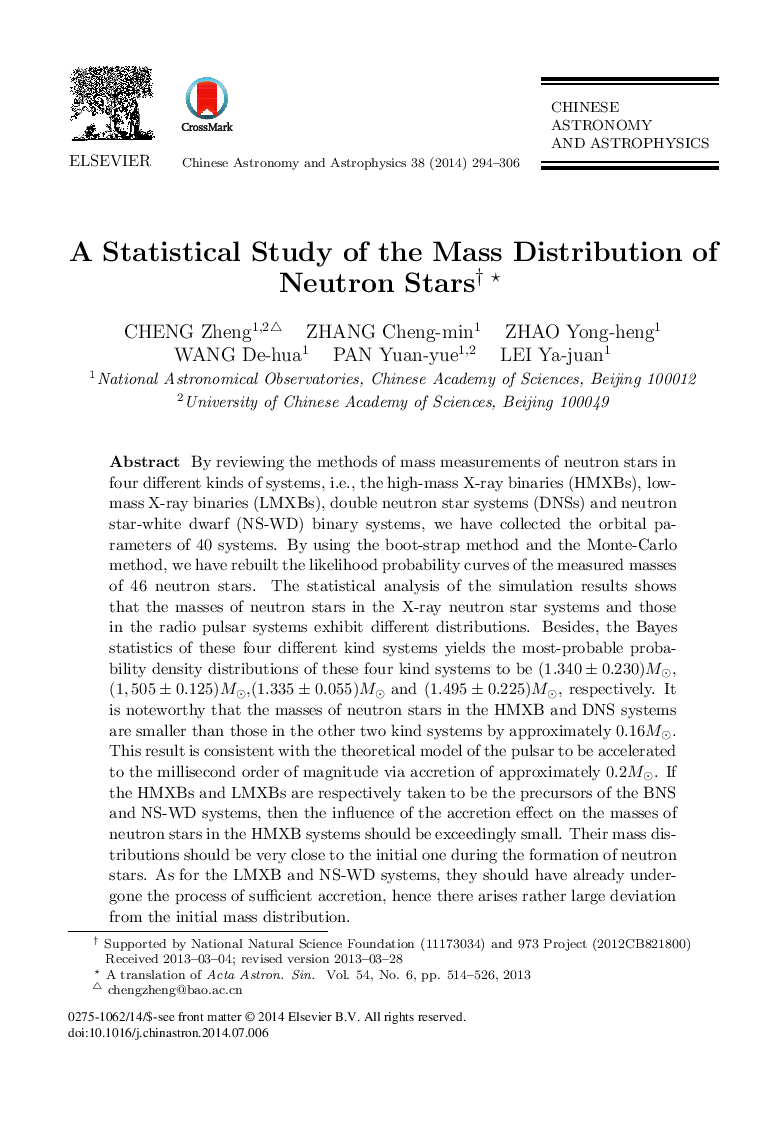| Article ID | Journal | Published Year | Pages | File Type |
|---|---|---|---|---|
| 1771921 | Chinese Astronomy and Astrophysics | 2014 | 13 Pages |
By reviewing the methods of mass measurements of neutron stars in four different kinds of systems, i.e., the high-mass X-ray binaries (HMXBs), low-mass X-ray binaries (LMXBs), double neutron star systems (DNSs) and neutron star-white dwarf (NS-WD) binary systems, we have collected the orbital parameters of 40 systems. By using the boot-strap method and the Monte-Carlo method, we have rebuilt the likelihood probability curves of the measured masses of 46 neutron stars. The statistical analysis of the simulation results shows that the masses of neutron stars in the X-ray neutron star systems and those in the radio pulsar systems exhibit different distributions. Besides, the Bayes statistics of these four different kind systems yields the most-probable probability density distributions of these four kind systems to be (1.340 ± 0.230)M8, (1, 505 ± 0.125)M8,(1.335 ± 0.055)M8 and (1.495 ± 0.225)M8, respectively. It is noteworthy that the masses of neutron stars in the HMXB and DNS systems are smaller than those in the other two kind systems by approximately 0.16M8. This result is consistent with the theoretical model of the pulsar to be accelerated to the millisecond order of magnitude via accretion of approximately 0.2M8. If the HMXBs and LMXBs are respectively taken to be the precursors of the BNS and NS-WD systems, then the influence of the accretion effect on the masses of neutron stars in the HMXB systems should be exceedingly small. Their mass distributions should be very close to the initial one during the formation of neutron stars. As for the LMXB and NS-WD systems, they should have already under- gone the process of suffcient accretion, hence there arises rather large deviation from the initial mass distribution.
